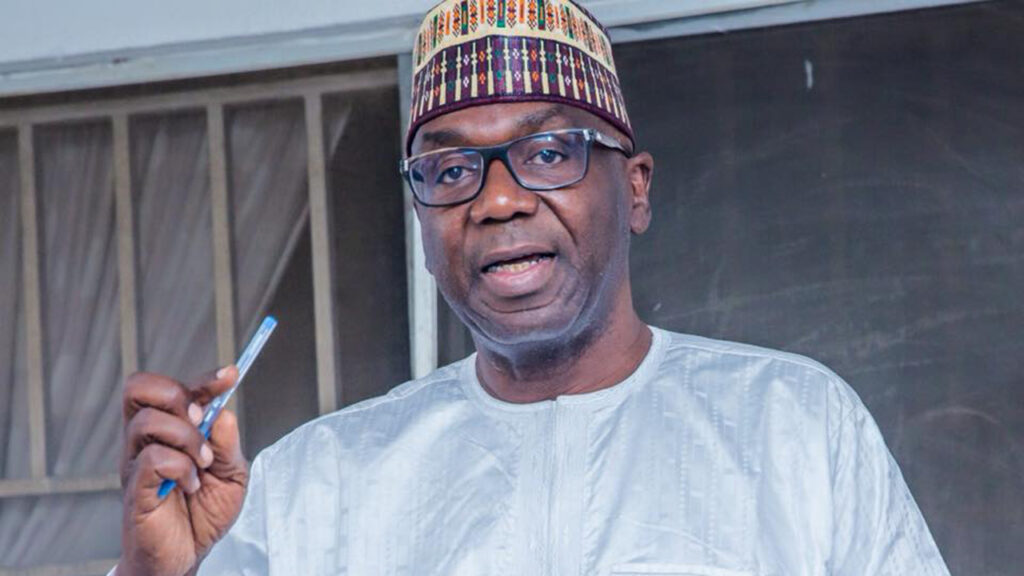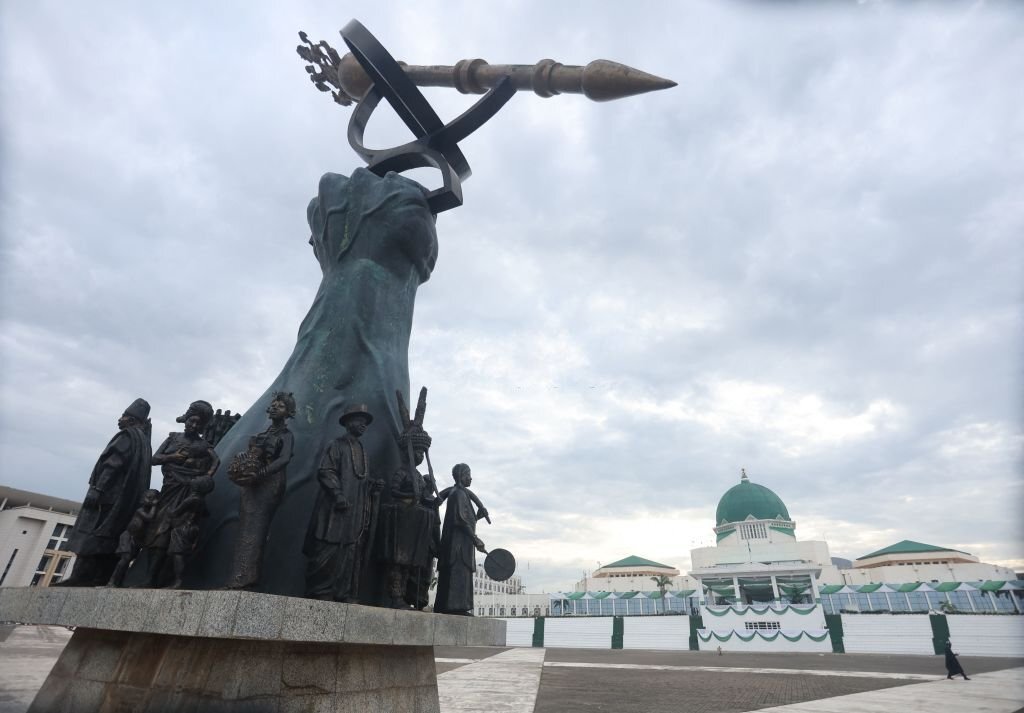
Nearly five years after the Federal Government promised to refurbish 10,000 Primary Healthcare Centres (PHCs) across the 774 Councils, a new study has indicated that about 80 per cent of the facilities are still non-functional.
The work, commissioned by Embassy of Kingdom of The Netherlands in Nigeria and put together by PharmAccess Foundation’s Nigeria Office (PAF), is titled “Nigeria Health Sector: Market Study Report.”
Other key findings are that the most populous black nation loses over $1.9 billion (N875 billion) yearly to medical tourism, with 60 per cent of the expenditure going for treatment of cancer, bone-related conditions, kidney and heart transplants.
The report said demand for healthcare, which was valued at $15 billion in 2018, could hit over $18 billion at end of 2023. It found that 99 per cent of medical devices are imported as segment worth $186 million in 2022 and projected at $202 million in 2023.
The researchers also discovered that aggregate budget allocations to health in the 36 states post-pandemic declined by 2.5 per cent from $1.92 billion in 2020 to $1.87 billion in 2022.
According to the study, “there are 34,076 PHCs in Nigeria, accounting for 85.3 per cent of total hospitals and clinics in the country. Of this number, it is estimated that only 20 per cent are functional. Most of them lack the capacity to provide essential healthcare services, in addition to challenges of poor staffing, inadequate equipment, poor condition of infrastructure and a lack of essential drug supply.
“The World Health Organisation (WHO) reported that only a quarter of PHCs have more than 25 per cent of the minimum required equipment package. The capacity to provide basic emergency obstetrics services is limited to about 20 per cent of the facilities. Due to the foregoing, N1.95 trillion ($5.4 billion), representing 84 per cent of primary health care expenditure, was spent in non-PHC facilities (that is, secondary and tertiary care in 2017).”
It concluded: “As part of its goal to ensure access to healthcare for 100 million Nigerians, the FMoH (Federal Ministry of Health) plans to build 10,000 PHCs throughout the country, with at least one PHC per ward (that is, an administrative unit with 10,000 people) to facilitate healthcare access across a wide geographic area. It is understood however, that 4,500 PHCs have been covered so far with support from donor partners.”
Former Minister of Health, Prof. Isaac Adewole, had on April 7, 2019, told journalists that the Federal Government had rebuilt over 4000 PHCs across the federation in line with the10,000 rehabilitation target of the President Muhammadu Buhari administration.
He added that the current government was reviving the collapsed primary healthcare sector and repositioning it for better delivery.
Adewole had said: “Our target is to rehabilitate 10,000. We have done over 4,000. Federal Capital Territory (FCT) Abuja is doing 225, Osun State, 332 and Kaduna, 250. We are moving towards the 10,000 mark.”
The minister had said government was to fund PHCs through the Basic Healthcare Provision Fund supported by the World Bank and British Department for International Development (DFID).
Adewole had explained that his ministry received $20 million from the global financial institution and another $2 million from the Bill and Melinda Gates Foundation, while government had mapped out a N13.7 billion first quarter allocation for the initiative.
His words: “The Federal Government wants to rebuild the secondary healthcare system with the states, while it concentrates on the tertiary healthcare system. We are hoping that by the next few years, the healthcare system in Nigeria will be back to shape. We can build the human resources required to make it functional.”
The study observed that medical tourism was fast becoming a culture among many Nigerians due to the deplorable state of the healthcare system in the country. Every month, almost 5,000 people emigrate to seek care that should have been accessed locally.
The about $1.3 billion, lost yearly to the menace, could have been invested to revamp Nigeria’s healthcare system.
According to a Price Waterhouse Coopers report (2016), 60 per cent of Nigeria’s medical tourism spend goes to four key specialties: oncology, orthopedics, nephrology, and cardiology. “This is nearly 20 per cent of the total government spending on the public health sector for the year, including salaries of all public sector doctors, nurses, and other healthcare workers as well as other health programmes like malaria, tuberculosis, polio and Human Immuno-deficiency Virus (HIV)/Acquired Immune Deficiency Syndrome (AIDS) prevention,” the new study noted.
It added: “India, for example, is a major market for medically challenged Nigerians who can afford or are compelled by fate of ill-health to seek medical attention outside the country. According to the Indian High Commission in Nigeria, 18,000 (47 per cent) of Nigerians that visited India in the year 2012 alone did so for medical treatments at an estimated cost of US$260 million.
“Another of such investments is the US$300 million African Medical Centre of Excellence due to be built in Abuja, Nigeria’s capital, and funded by the African-Export-Import bank (Afreximbank). A sizeable number of Foreign Direct Investments (FDIs) are coming into the country on account of the prospects offered by the local capture of medical tourism spend by Nigerians.”
Other key findings of the study are:
▪ Health facilities are categorised into three sub-groups: Government owned, for-profit private, and faith based. Government owned facilities are the most dominant in number and account for over 70 per cent of health facilities in the country. In terms of access to care however, the private health facilities account for about 60 per cent of services provided in the country
•There are 39,983 hospitals and clinics in Nigeria as of 2019, according to the FMoH’s health facility registry (HFR) database
•PHCs account for 85.2 per cent of secondary health facilities account for 14.4 per cent
•Tertiary care facilities account for 0.4 per cent
▪As of 2014, there were an estimated 134,000 beds yielding a ratio of 0.8 beds per thousand population at a Compounded Annual Growth Rate (CAGR) of 3.8 per cent since 2009
•Nigeria pharma accounts for 60 per cent of the market in the Economic Community of West African States (ECOWAS) block
•Over the Counter (OTC) medicines accounts for a significant share of the Nigeria pharma market
•Prescription ethical pharma and OTC pharma products are valued at $500 million and $900 million respectively
•There are 132 licensed pharma manufacturers in-country
•There are 5,795 licensed pharma distributors and 350 importers
•For every $1 pharma export, Nigeria imports $99 worth
•Out of Pocket (OOP) account for 75 per cent of healthcare financing in Nigeria
•Revitalisation of moribund PHCs. 10,000 facilities targeted in the Economic Recovery and Growth Plan (ERGP)
•386,000 additional beds required and $82 billion required in healthcare real estates
•Radio-diagnostic equipment maintenance and Biomed engineering training
•Urgent need to digitalise health insurance processes to curtail low investment performance indicators identified
•Need to scale up investments in health insurance penetration to improve Universal Health Coverage (UHC) Service Index rating for Nigeria
•Growing importance of health informatics and evidence-based reporting
•Requirement for turnkey project structuring on the rise
•Non Communicable Diseases (NCDs) are becoming more prevalent in Nigeria’s disease- burden mix
•A number of innovative digital health start-ups are springing up and open to investments
•Growing investments for local capture of medical tourism opportunities example, Afreximbank’s medical centre of excellence, Duchess Hospital Lagos (a subsidiary of the Reddington Hospital Group), a 100-bed multi-speciality facility, commissioned recently in November 2021.
The study concluded: “The Nigerian health market is relatively under-developed and in urgent need of partnerships and investments. The identified gaps in the market offer a huge opportunity for investments with prospects for decent returns as demonstrated in the business cases. This is however dependent on having a clear understanding of the market landscape, inherent opportunities and associated risks, appreciation of relevant government policies, and engagement of key stakeholders – which this market study report has tried to provide deep insights into.
“The hope is that the market information provided in this report, alongside identified opportunities will trigger the influx of investments that will improve the fortune of the Nigerian health market, and, by extension, the health indices of the Nigerian people.”











